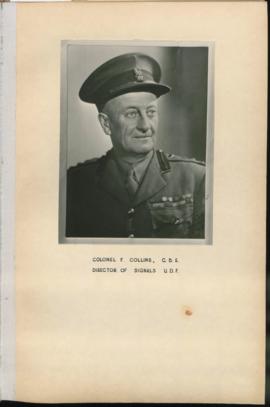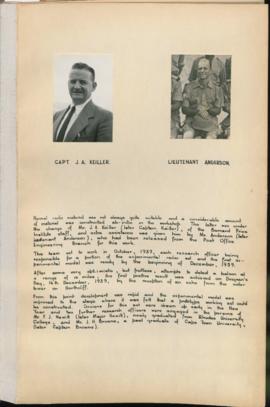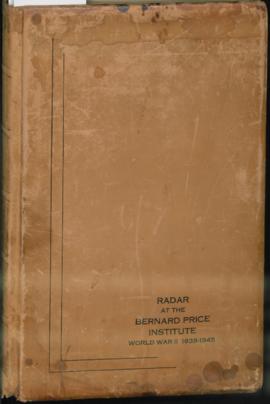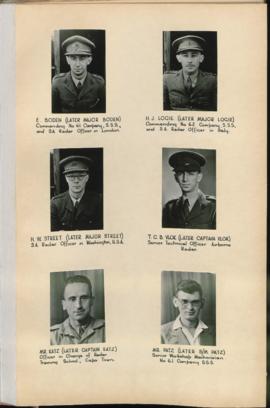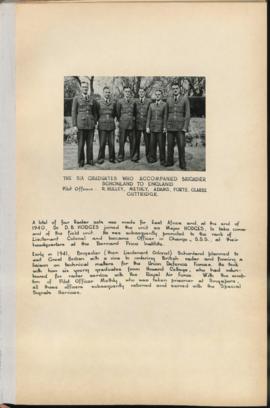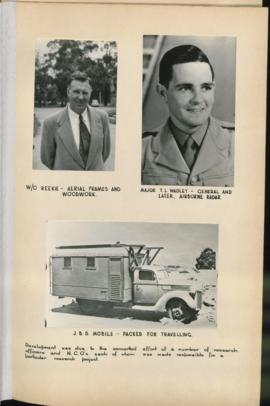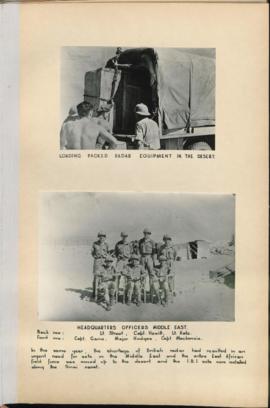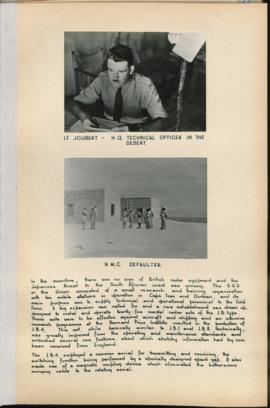Identity area
Reference code
Title
Date(s)
- 1939-1945, 2016 (Creation)
Level of description
Fonds
Extent and medium
68 pages of 1 bound volume in digital format; 1 digital journal article
Context area
Name of creator
Administrative history
As early as 1930, the possibility of establishing a lightning research laboratory was proposed, and later, Bernard Price, who was general manager and chief engineer of the Victoria Falls and Transvaal Power Company, took steps towards the creation of a geophysical research institute. Price not only championed this endeavour, but also made a personal contribution towards its creation which was co-funded by the Carnegie Corporation of New York.
In 1937, Wits established the Bernard Price Institute of Geophysical Research which was charged with conducting research into, inter alia, seismology, lightning, terrestrial magnetism, meteorology and radio communications. While this institute was separate from the Electrical Engineering department at Wits, many of the research activities were closely allied with Electrical Engineering. In fact, it was intended that the work of the institute would not only be to conduct pure research, but also to serve the electrical and mining industries.
(From "School of Electrical and Information Engineering @ University of the Witwatersrand - History of the School)
Archival history
Immediate source of acquisition or transfer
Content and structure area
Scope and content
The large leather bound original volume contains photographs and handwritten descriptions relating to the radar research and development at the Bernard Price Institute.
The radar development for the detection and location of aircraft and ships by radar, had been started by Britain some years before the outbreak of World War II. In 1939 General Jan Smuts appointed South African scientists, under the leadership of Dr. B.F.J. Schonland, then Director of the Bernard Price Institute of Geophysical Research and Professor of Geophysics at the University of the Witwatersrand, to gather information for the research programme.
The institute committed itself entirely to war work and became the headquarters for what became known as the Special Signals Services which was tasked with preparing to train people in the use of British radar. Britain shared secret information on radar technology with its Dominions, and in South Africa’s case, this transfer of information occurred primarily through Schonland being briefed directly by Dr Ernest Marsden. Ever the scientist, Schonland, rather than serve purely in a training capacity, set up a research and development team, and based on the information he received from Britain, the team developed a South African version of radar within a few months using components scavenged from radio shops. The South African radar’s functionality was first demonstrated in mid December 1939.
The album was comiled by Dr G.R. Bozzoli, together with members of the radar team, at the request of the committee formed to dissolve the team at the end of WWII. Members of the team included Basil Schonland, Bernard Price and Humphry Raikes (former Vice Chancellor of Wits).
Appraisal, destruction and scheduling
Accruals
System of arrangement
Conditions of access and use area
Conditions governing access
Conditions governing reproduction
Language of material
Script of material
Language and script notes
Physical characteristics and technical requirements
Digital collection.
Finding aids
Uploaded finding aid
Allied materials area
Existence and location of originals
The original bound volume is stored at the Archives and Records office of the University of the Witwatersrand, Senate House.



